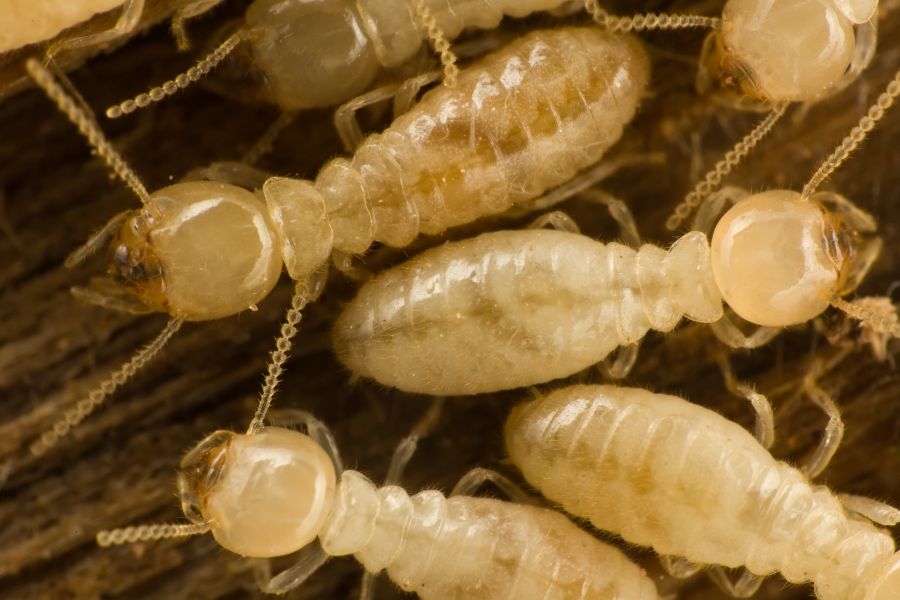What is the Life Cycle of a Termite?
Out of all pests, termites follow one of the most unique life cycles. When they are nymphs, termites will molt several times before maturing into its designated caste. The process is typically as follows:
- Two reproductive/swarmer termites will mate and become king and queen of a new colony.
- The queen termite lays the eggs she has been producing.
- Larvae will hatch from the eggs and become nymphs.
- The nymphs will continually molt up to three times before reaching maturity.
- The termite will be assigned a caste, or a role within the colony. These include worker, soldier, and reproductive termites.

Termite Life Stages in Iowa
The termite life cycle begins when the reproductive caste, also known as alates or swarmers, swarm to form new colonies. After mating, the reproductives will shed their wings and the new king and queen excavate a small chamber in the soil underground, where the queen begins to lay her eggs. The queen termite will lay up to 30,000 eggs in a day. Her eggs hatch into larvae and the young nymph termites will molt three times before being assigned as a reproductive, worker, or soldier.
Because of the quick reproduction rate of termites, it’s important to reach out to a professional termite exterminator as soon as you notice signs of an infestation.
Do You Have a Termite Problem? We Can Help.
Click the button below to leave your information & we'll be in touch in an hour or less.
Get a FREE, no-obligation quote!
"*" indicates required fields
*During normal business hours. After hours calls will be returned the next business day.
What is the Lifespan of a Termite?
Different termite species and castes live for varying amounts of time. In general, termites live for the following amounts of time: On average, termites live for the following amounts of time:
- Worker and soldier termites live for one to two years.
- Reproductive termites, also known as alates or swarmers, can live for nearly 4 years.
- Queens are able to live much longer than any other caste and have been known to survive for upwards of 20 years in optimal conditions.
How Do Termites Get Assigned a Caste?
Scientists have yet to discover how exactly a termite is designated into one caste or another. Research has concluded that it is likely determined by social and environmental cues based on the needs of the colony at that time. Further research has suggested that the specific caste each termite is assigned isn’t always a lifelong assignment. Depending on the needs of the termite colony, some termites may be able to switch castes entirely.
What Is the Life Cycle of a Termite in Des Moines?
Serving Central Iowa since 1989
Des Moines | West Des Moines | Cedar Rapids | Davenport | Iowa City | Urbandale
Marshalltown | Fort Dodge | Waterloo | Ankeny | Ames | Altoona | Bondurant | Waukee
Home » Termite Learning Center » Termite Identification » What Is the Life Cycle of a Termite?
